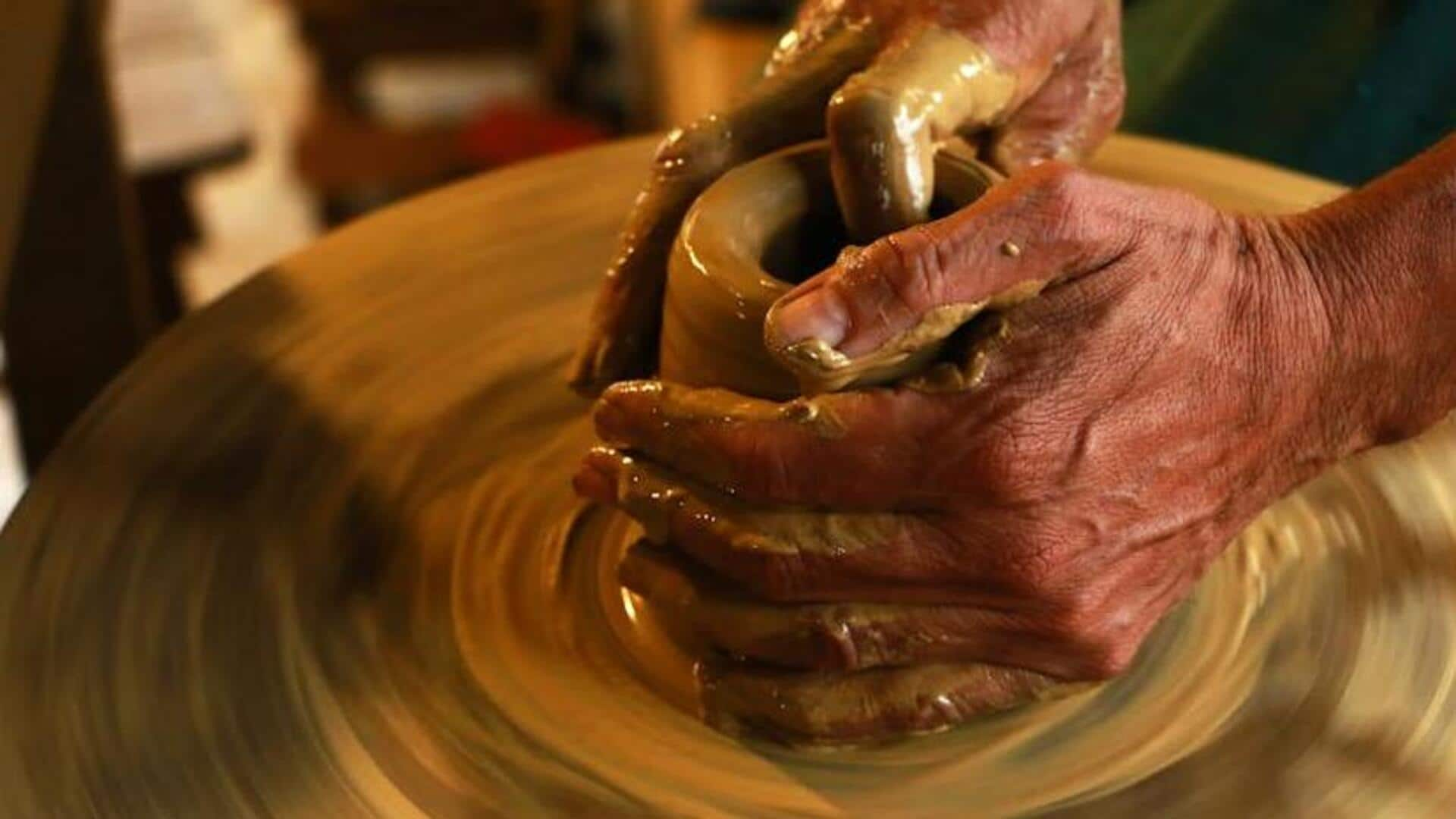
Beginner in pottery? You need to read this
What's the story
Pottery is an ancient craft that has existed for thousands of years. In this, clay is shaped into functional or decorative items and hardened by heat. Not only does this art form allow you to express your creativity, but it also serves practical purposes in our daily lives. From simple bowls to intricate sculptures, the possibilities of pottery are endless for artisans and hobbyists.
Basics
Understanding the basics of pottery
To get started with pottery, one needs to learn the basic techniques such as hand-building and wheel-throwing. Hand-building is where you shape clay with your hands and some basic tools, while wheel-throwing is where you use a potter's wheel to create symmetrical pieces. Both techniques need practice and patience to master, but the opportunity to create something unique is worth it.
Clay selection
Choosing the right clay
Choosing the right kind of clay is the most important step in pottery. You can choose from a variety of clay types such as earthenware, stoneware or porcelain. Each of them comes with its own characteristics that determine how easy they are to work with, and how they look after firing. Most beginners prefer earthenware as it is easy to work with and fires at a lower temperature.
Essential tools
Tools needed for pottery making
A few essential tools are a must for pottery making. These include a potter's wheel (if you're going for wheel-throwing), various shaping tools like ribs and knives, sponges for smoothing surfaces, and kilns for firing finished pieces. Having the basics can take your pottery making skills to the next level and you would be able to create a variety of pottery items.
Skill enhancement
Techniques to enhance your skills
To improve your skills in pottery, it's essential to practice regularly, as well as learn new techniques such as glazing or slip casting. Glazing gives color and texture to your finished pieces, while slip casting lets you create complex shapes by using molds filled with liquid clay (called slip). Exploring these techniques can help you expand your artistic capabilities in pottery making.